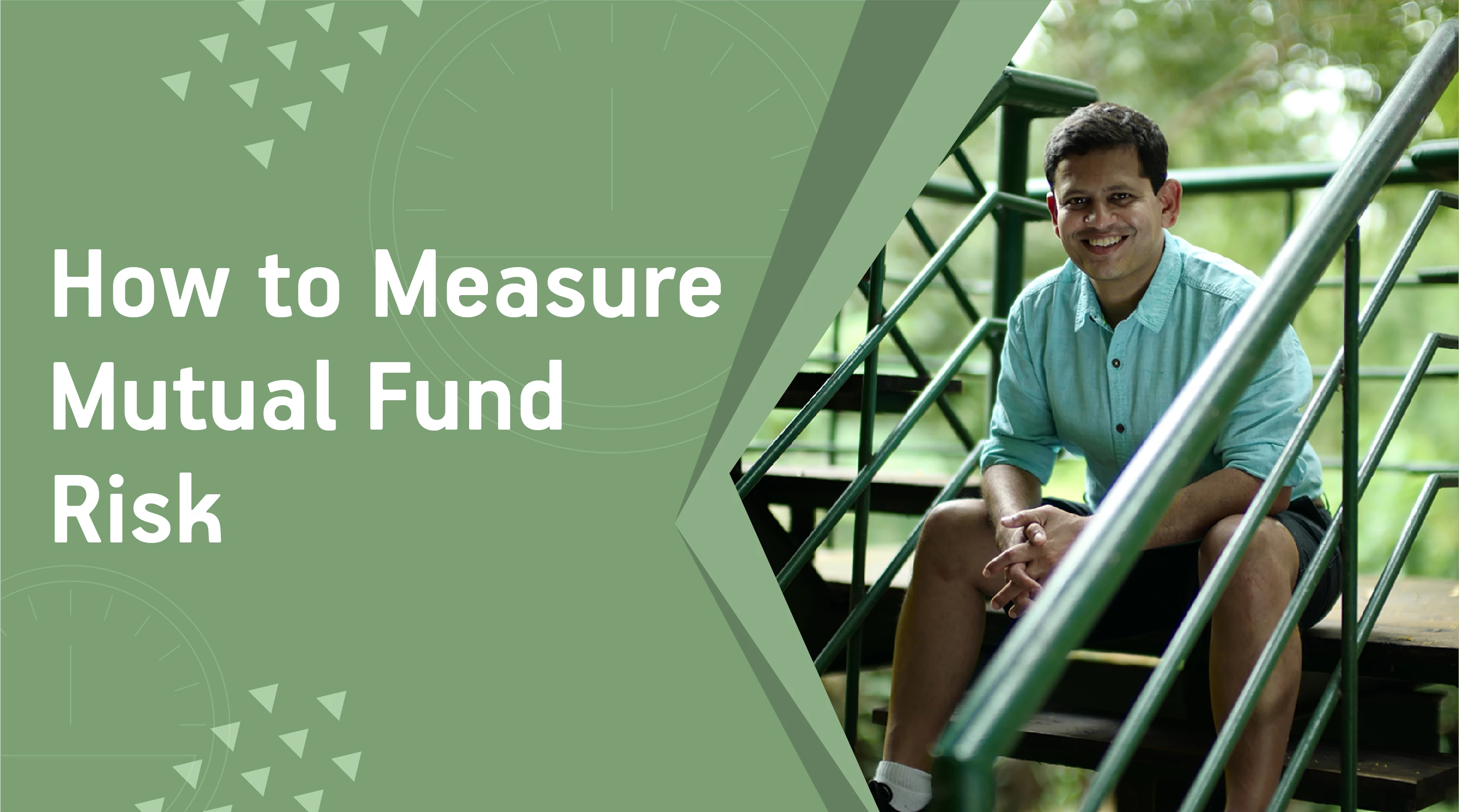-
Our Products
Our FundsFocus Funds
-
Self Care
Self-ServiceFind InformationWays To TransactPartner Solutions
-
Downloads
- Learnings
- About Us
-
More
-
Shareholders
-
Shareholders
-
Updates
-
-
SIP Calculators
- Back
-
Shareholders
6 Ways to Measure Mutual Fund Risk

Jan 05, 2023
4 min
4 Rating
Like most financial instruments, mutual funds carry risk. Check out this post to learn how to measure this risk for better investment decisions. Keep reading.
Every type of investment, including mutual funds, has two key components - return potential and risk. Investors select their preferred fund after analysing its return potential and their risk appetite.
To make it easier for investors, SEBI introduced a new guideline on October 5th 2020, making it mandatory for fund houses and AMCs to visually depict their fund’s risk level through a ‘Risk-o-meter’ in the SID (Scheme Information Document). According to this rule, a fund can be assigned one of the 6 risk levels ranging from low to very high and will be evaluated monthly.
While this move is certainly helpful for investors, sometimes they may want to delve deeper and identify the risk level of a fund on their own.
But how to measure risk in mutual funds?
Let's take a look at 6 risk measures commonly used for analysing mutual funds-
1. Alpha
Alpha measures the risk-adjusted performance of a mutual fund scheme. It is measured by comparing the price risk or volatility of a fund's portfolio against the underlying benchmark on a risk-adjusted basis. The additional or lower return generated by a scheme compared to its benchmark is its Alpha.
For instance, an Alpha of 1.0 in a fund says that it has outperformed its benchmark index by 1%. Similarly, if the Alpha is -1.0, it has underperformed by 1% against its benchmark. Investors should generally prefer schemes with a higher alpha.
2. Beta
The Beta or Beta Coefficient measures the volatility of a scheme against the overall market. Simply put, it measures how likely a scheme will move in tandem with the market.
For instance, if the scheme has a Beta of 1.0, it'll mostly move in accordance with the market. Similarly, a Beta of less than 1.0 means that the fund has lower volatility than the market, and a Beta above 1.0 suggests higher volatility. So, if you're a risk-averse investor, consider investing in low-beta funds, and if you're an aggressive investor with a higher risk appetite, you can invest in high-beta funds.
3. R-Squared
The R-squared is one of the most critical risk measures in mutual funds. It measures the scheme's correlation with its benchmark index. R-squared is calculated on a scale of 0 to 100. So, a scheme's R-squared value of 100 signifies its performance perfectly correlates with its underlying benchmark.
You can use R-squared to select mutual fund schemes. For instance, if an equity scheme has a high R-squared, you can consider replacing it with an index fund that generally has R-squared close to 100 as they only mimic their underlying index. By choosing an index fund, you can avoid paying the higher expense ratio of an actively managed equity scheme.
4. Standard Deviation
In finance and statistics, standard deviation measures how the data disperses from its mean. In mutual funds, it measures the possible degree of variation of a fund's returns from its expected returns based on its historical performance.
For instance, let's consider a scheme that delivers average returns of 12% and has a standard deviation of 4%. So, the scheme could possibly provide returns in the range of 8% (12%-4%) to 16% (12%+4%). Schemes with a higher standard deviation are generally considered more volatile and riskier.
5. Sharpe Ratio
William Sharpe, a Nobel laureate economist, developed the Sharpe ratio, which measures the risk-adjusted performance of an investment. It helps investors know whether the returns generated by a scheme are due to the fund manager's investment decisions or are generated by excess risk.
It is calculated by subtracting risk-free returns from the returns generated by the scheme and dividing it by its standard deviation. For instance, if the Sharpe ratio of scheme A is 1 and scheme B is 2, the latter delivered better risk-adjusted returns.
6. Sortino Ratio
While the Sharpe ratio uses standard deviation or the scheme’s overall volatility, the Sortino ratio only considers the downside standard deviation.
Like the Sharpe ratio, you subtract risk-free returns from the returns generated by the scheme for the Sortino ratio as well. But rather than dividing the difference by standard deviation, it is divided by the downside deviation. In short, the Sortino ratio determines how successfully a mutual fund scheme capped the portfolio's downside volatility.
Also Read – How to Invest in Mutual Funds?
Analysing Mutual Fund Risks
These 6 are the common measurement of risk in mutual funds. While a brief explanation of these measures is given above, try to learn more about how they're calculated and used to analyse the selected schemes' risk profile better.
In case of any queries, you can always consult a reliable investment advisor who can assist you in building an investment portfolio according to your risk appetite and objectives.
Mutual Fund investments are subject to market risks, read all scheme related documents carefully.





 1800-270-7000
1800-270-7000



